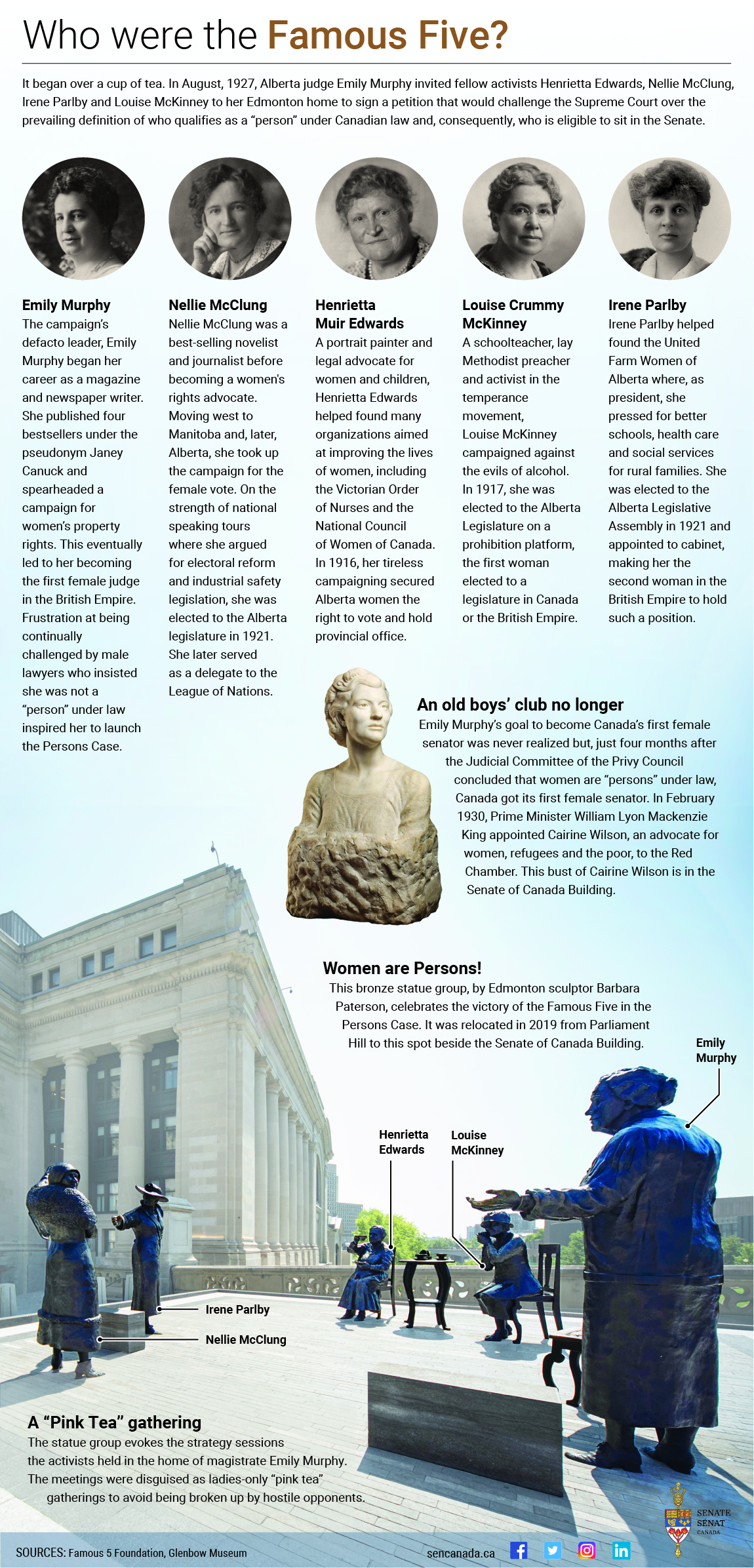Why the Persons Case Matters

Disclaimer: The Senate acknowledges that since the writing of this article, social awareness and perspectives on these individuals have evolved, particularly around issues of diversity and inclusion. The Senate acknowledges that these changes in context are important and encourages readers to consider the content in light of the ongoing discussions and evolving social understanding.
No one had yet coined the term “glass ceiling” in 1929, but five women pushed through a barrier that had kept Canadian women out of public office since the country was created more than 60 years earlier.
Led by Emily Murphy, Alberta’s first female judge, a group of Alberta women who came to be known as the “Famous Five” challenged a part of the Constitution that had prevented women from being appointed to the Senate.
They won the so-called Persons Case, a legal challenge to a narrow interpretation of the Constitution that did not consider women to be “persons.”
Women had been allowed to run in federal elections beginning in 1921. Agnes Macphail, the Progressive candidate in Grey South East, a riding centred around Guelph, Ont., became Canada’s first female Member of Parliament.
But the government resisted pressure to appoint women to the Senate, arguing the British North America Act (now known as the Constitution Act, 1867 ) didn’t recognize women as “qualified persons” — the act used the word “persons” in the plural sense but when it referred to an individual person, it used the word “he.”
The prevailing attitude: men were the only “qualified persons” who could be appointed to the Senate.
Murphy was outraged. She had been subject to sexism since 1916. On her first day on the bench, a lawyer challenged one of her rulings. As a woman, Murphy wasn’t a “person,” so how could she be expected to be taken seriously as a judge? It was a recurring argument she heard throughout her legal career.
In 1927, Murphy and four other women leaders in Alberta (Henrietta Muir Edwards, Nellie McClung, Louise McKinney, and Irene Parlby) asked the Supreme Court of Canada whether the British North America Act’s (BNA) section 24 included women in its definition of “persons.” Five weeks later, the Supreme Court reached a verdict in Edwards v Canada, the official name of the case. Its conclusion? Under Canadian law, women were not “persons.”
The Famous Five (Emily Murphy, Henrietta Muir Edwards, Nellie McClung, Louise McKinney, and Irene Parlby) were undaunted. They took their case to the Judicial Committee of the Privy Council in London, England, which was then the last avenue of appeal. On October 18, 1929, it overruled Canada’s Supreme Court, opening the door for some women to be appointed to the Senate and clearing the way for further advancing women's rights. October 18 has come to be known as Persons Day.
The Famous Five were rewarded on February 15, 1930, when Cairine Wilson became the first Canadian woman named to the Senate.
A sculpture honouring the Famous Five was unveiled on Parliament Hill in 2000. The monument was carefully moved next to the Senate’s temporary home in the summer of 2019 as a result of the rehabilitation of Centre Block.



